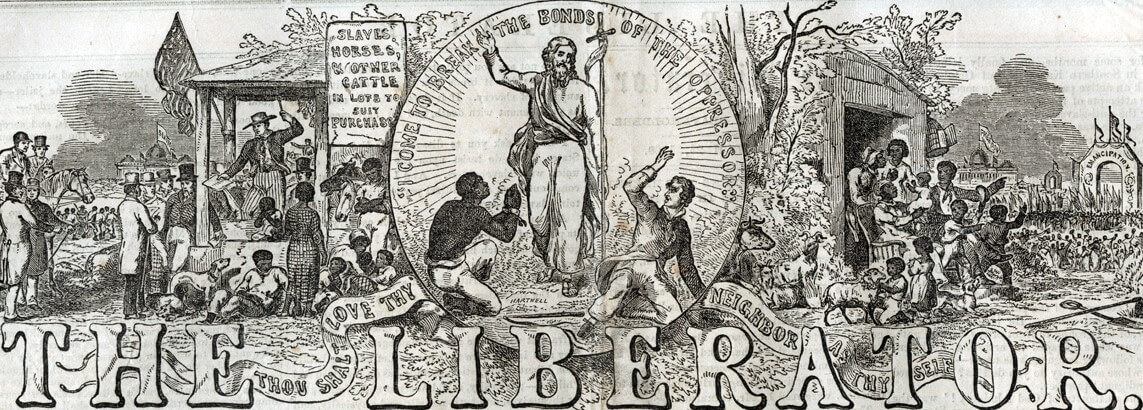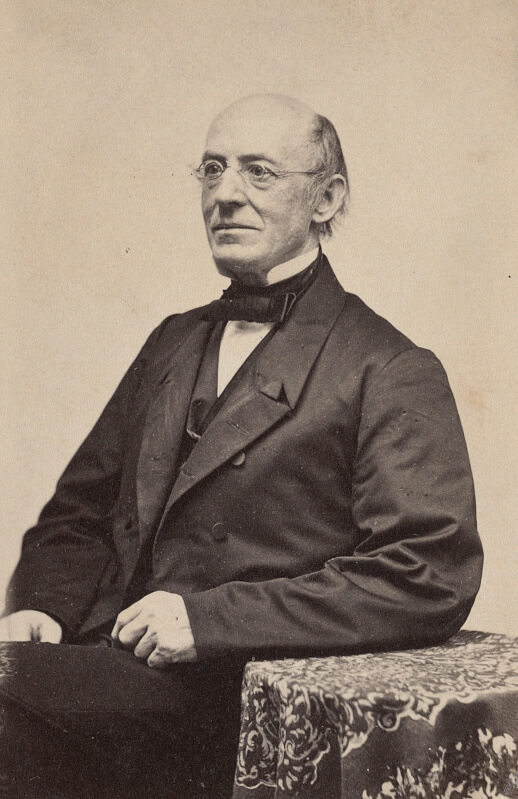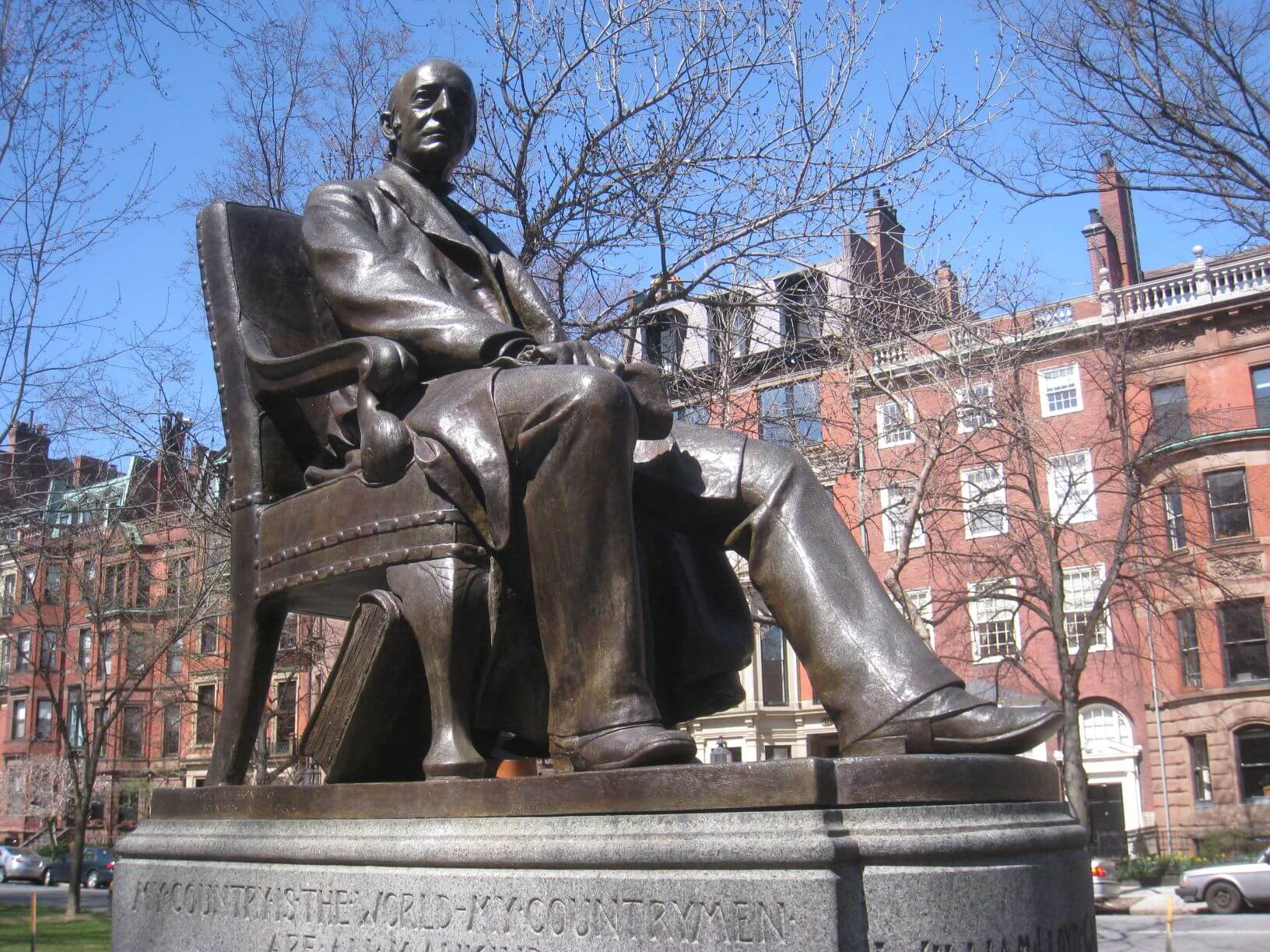William Lloyd Garrison
William Lloyd Garrison, one of the most prominent white abolitionists before the Civil War, published The Liberator and shaped the debates that guided the anti-slavery movement. Garrison was held at Leverett Street Jail in the old West End for his own safety during one harrowing case of mob violence.
William Lloyd Garrison was born on December 10, 1805 in Newburyport, Massachusetts. He was born to a merchant sailor who deserted the family in 1808 after his livelihood was severely restricted by the Embargo Act of 1807. William had to work at a very young age, delivering wood or selling candy, but by the age of 11 he started an apprenticeship as editor and writer for the Newburyport Herald. Garrison continued in the newspaper business as editor of National Philanthropist in Boston, and joined the abolitionist movement in 1829 by co-editing the Genius of Universal Emancipation in Baltimore, Maryland. Between 1829 and June 1830, Garrison actually served jail time for libel because of his published criticism of a Newburyport merchant invested in the slave trade. Garrison joined the abolitionist movement after having previously joined the American Colonization Society in 1825. The American Colonization Society sought to raise money for free Black Americans to move to
Liberia, a new territory in West Africa, in lieu of ever becoming full-fledged American citizens. Garrison repudiated the American Colonization Society by 1830 after coming to the understanding that Black people belonged in American society and deserved equal rights. On January 1, 1831, Garrison released the first issue of his own publication, The Liberator, and conveyed his firm moral commitment to abolition by stating that “I do not wish to think, or speak, or write, with moderation….I will not retreat a single inch–AND I WILL BE HEARD.” Garrison founded the New England Anti-Slavery Society in 1832, and soon helped create the American Anti-Slavey Society in 1833.
In 1835, Garrison was held at the Leverett Street Jail in the West End for his personal protection. A violent mob broke up a meeting at the offices of The Liberator, where Garrison spoke to the Boston Female Anti-Slavery Society. As Garrison arrived at the offices to speak, the mob was already forming and soon broke in the doors. After the mob caught Garrison and threw epithets at him, potentially giving Garrison a physical beating, Boston’s police arrived and took Garrison into custody at Leverett Street Jail. There were many cases of violence by angry mobs against abolitionists during the 1830s, such as in New York and Illinois. The West End Museum previously covered the “Garrison mob” and the abolitionist’s connection to the West End in an exhibit, “Lords of the Loom.”
Garrison is often known for his intense disagreement with Black abolitionist Frederick Douglass in 1851. Douglass argued that the Constitution was a vehicle for ending slavery, but Garrison was immensely critical of Douglass’s pro-Constitution position. Douglass originally agreed with Garrison that the Constitution was inherently connected to the maintenance of slavery, because of the many pro-slavery compromises baked into the Constitutional Convention in 1787. But Douglass later believed that the Constitution could be reinterpreted, despite the intentions of its framers, for the anti-slavery cause. Both Garrison and Douglass would support Abraham Lincoln’s election to the presidency in 1861, and the Emancipation Proclamation in 1863. Garrison published the final issue of The Liberator in December 1865, and retired from public life until his death in May 24, 1879.
Article by Adam Tomasi
Source: Encyclopedia Britannica; PBS; Finkelman, “Frederick Douglass’s Constitution: From Garrisonian Abolitionist to Lincoln Republican”; West End Museum











